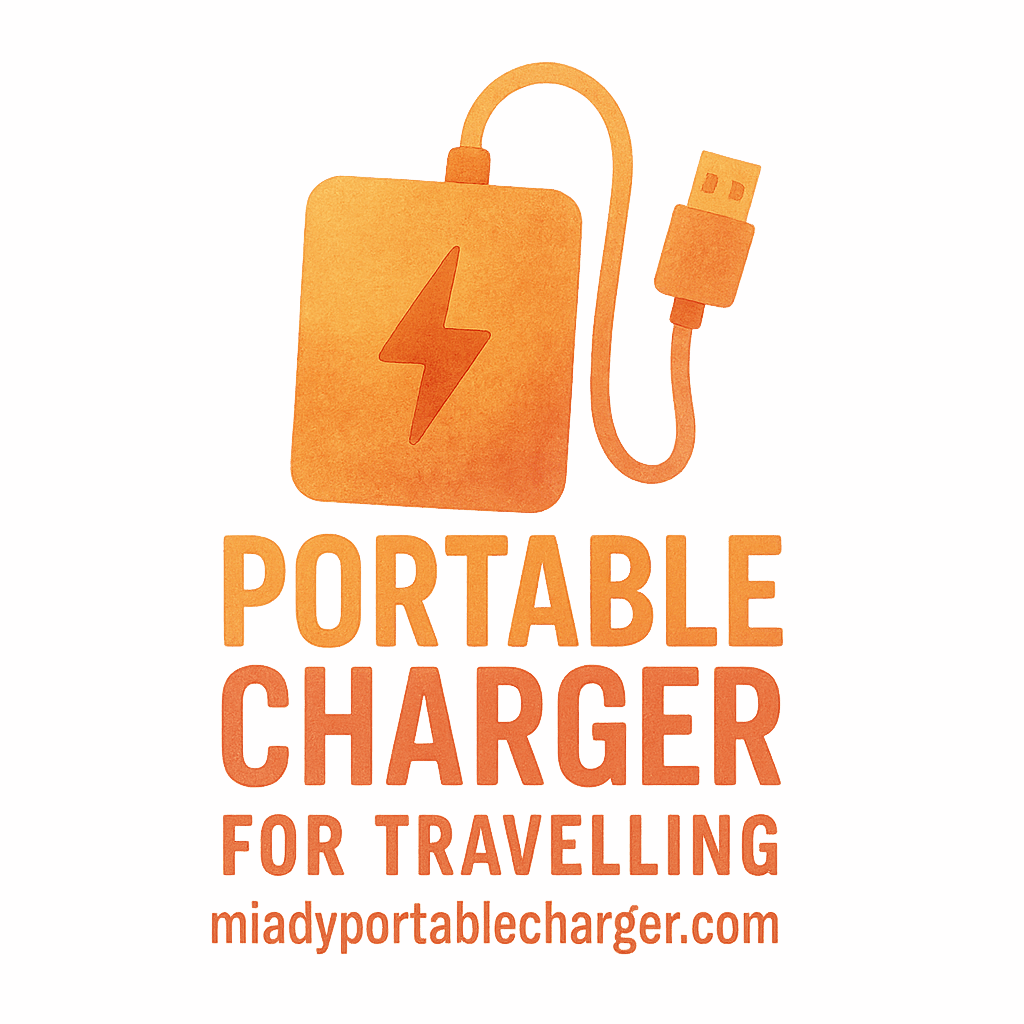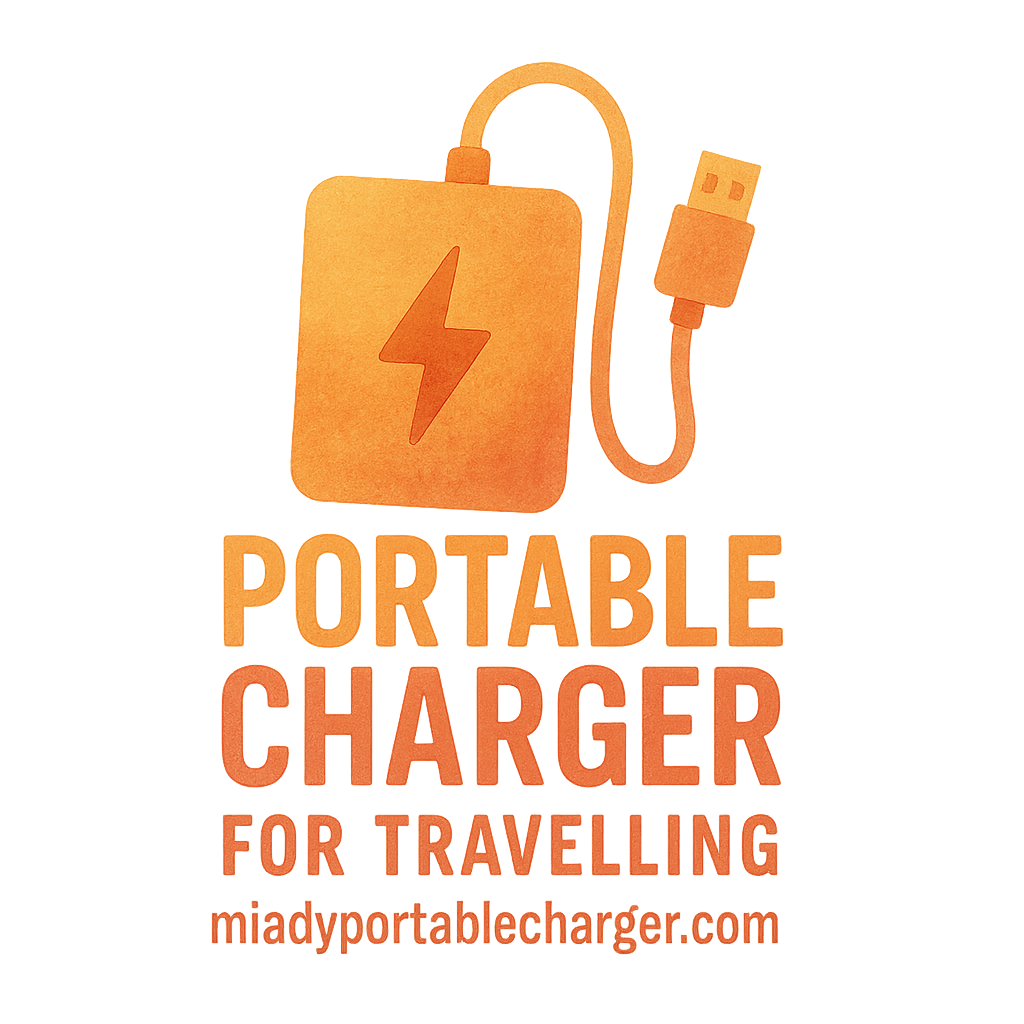Introduction: Why You Need a Portable Charger for Travel
When you’re on the move—whether you’re exploring a new city, hiking through the mountains, or simply enjoying a long road trip—having a reliable power source for your devices is essential. A portable charger can be a traveler’s best friend, ensuring your smartphone, tablet, or other gadgets are always powered up. But not all portable chargers are created equal. Before you click “buy,” there are a few critical things to consider to make sure you choose the right one.
A portable charger can save you from the frustration of a dead phone, particularly on long flights or during unexpected delays. But with so many options available, how do you pick the one that best fits your needs? Let’s dive in.
1. Battery Capacity: What You Need to Know
When it comes to portable chargers, battery capacity is a top priority. The capacity determines how much power the charger holds, which directly influences how many times it can recharge your devices before it itself needs a boost.
How Battery Capacity Affects Charging Efficiency
Battery capacity is measured in milliampere-hours (mAh), and the higher the mAh, the more juice it holds. So, for example, a charger with a 20,000mAh capacity can charge your device multiple times before needing a recharge itself.
Choosing the Right Capacity Based on Your Devices
- For smartphones: A charger with 10,000mAh can typically charge a smartphone two to three times.
- For larger devices like tablets and laptops: Opt for a charger with 20,000mAh or more.
Consider your typical device usage. Are you going on a long trip with limited access to outlets? A higher capacity charger might be the best fit. For a deeper dive into choosing the right charger for your needs, check out our buying guide.
2. Portability: Size and Weight Matter
A bulky charger might be powerful, but is it practical for travel? It’s important to balance capacity with portability. No one wants to lug around a heavy power bank if they don’t need to.
Compact and Lightweight Options for Travel
Look for chargers that are compact and lightweight. Many brands offer portable chargers that are small enough to fit into your pocket or bag while still offering enough power to keep you charged during your travels.
Balancing Power and Portability
It’s all about finding that sweet spot between power and portability. A charger that’s small and light yet powerful enough to meet your needs can save you from carrying around unnecessary bulk. Don’t sacrifice too much power for the sake of size—your charger should meet both your charging and space requirements.
3. Charging Speed: Fast vs. Standard Charging
Time is precious when you’re on the go, and this is where charging speed comes into play. Fast charging technology can make a huge difference, especially when you’re running low on power and need a quick boost.
What Is Fast Charging and Why It Matters
Fast charging allows your devices to recharge much more quickly than traditional charging methods. Technologies like Qualcomm Quick Charge or USB-PD (Power Delivery) are popular fast-charging protocols. If you’re constantly on the move, fast charging can save you hours of waiting.
Compatibility with Your Devices
Ensure that your portable charger supports the fast-charging protocols used by your devices. If your smartphone supports Quick Charge, make sure your charger can deliver that kind of power.
For more tips on charging speed and how to maximize it, head over to our charging tips.

4. Output Ports: Number of Devices You Can Charge Simultaneously
Traveling with multiple devices? A charger with multiple output ports can help you stay powered up without the need for separate chargers.
Single vs. Multiple Outputs
Some portable chargers have one USB port, while others come with two or more. If you’re traveling with a phone, tablet, and smartwatch, a charger with multiple outputs can help you charge everything at once.
Charging Multiple Devices on the Go
Look for chargers with at least two USB ports, especially if you’re traveling with family or friends. You can also find portable chargers with USB-C ports, which are great for newer devices.
5. Compatibility with Different Devices
It’s crucial that your portable charger supports all of your devices, not just your phone. Laptops, tablets, e-readers, and cameras might require different charging specifications.
What Devices Should Your Charger Support?
Before purchasing, check which devices the charger supports. Some chargers are designed specifically for smartphones, while others are versatile enough to handle laptops, cameras, and other tech gear.
Choosing a Charger with Universal Compatibility
The best chargers are universally compatible. Whether you’re charging an Android, an iPhone, a tablet, or even a Bluetooth speaker, choose a charger that can handle different types of devices. For more on universal compatibility, check out our product reviews.
6. Safety Features: Protect Your Devices and Yourself
The safety of your devices—and yourself—should never be overlooked. High-capacity batteries can pose risks if not handled correctly, so it’s vital to choose a charger that prioritizes safety.
Overcharge Protection and Heat Management
Overcharge protection ensures that your devices won’t suffer from battery degradation due to prolonged charging. Additionally, heat management prevents your charger from overheating, which could potentially damage your devices or cause a fire hazard.
Short-Circuit Protection and Other Safety Features
Look for chargers with built-in protection against short-circuits, overcurrent, and overvoltage. These features will give you peace of mind knowing that your charger is not only safe for your devices but also safe to use. If you’re traveling somewhere with extreme temperatures, be sure to select a charger that’s designed to handle heat, like the ones featured in our outdoor charger collection.
7. Charging Tips and Speed for Different Environments
Your charging needs may vary depending on where you’re traveling. In some countries, outlets and charging speeds may differ, and you’ll want to be prepared.
Traveling in Different Regions: What to Expect
Traveling internationally? Different regions might have varying power standards. Researching voltage and plug types will ensure your charger works where you’re going. For a complete checklist of what to bring, check our travel essentials.
Dealing with Airport Regulations and Charging Restrictions
Airports and airplanes often have regulations about carrying portable chargers. The FAA, for example, restricts chargers with over 100Wh from being carried in checked luggage. Always check airline rules to avoid surprises when you’re at security.
8. Waterproof and Shockproof Features for Travel Adventures
If you’re the adventurous type—camping, hiking, or exploring wet environments—then waterproof and shockproof features are essential. These added layers of protection ensure your charger holds up against the elements.
Why a Waterproof Portable Charger Is a Must for Outdoor Travel
Waterproof chargers can withstand accidental spills or even rain showers. Look for a charger with an IP rating to ensure it’s waterproof enough for outdoor conditions.
Shockproof Features for Adventurous Journeys
If you’re prone to dropping things while hiking or trekking, a shockproof charger can protect your investment. Look for rugged designs that can withstand bumps and drops, particularly if you’re traveling in more extreme environments. For some options, take a look at our waterproof chargers.
9. Brand Reputation and Reviews: Trustworthy Sources
The brand behind the portable charger matters. Well-known brands tend to provide better quality and customer support, making it easier to resolve any issues you encounter.
Why Brand Matters When Buying a Portable Charger
A reputable brand ensures you’re getting a high-quality product that’s durable and safe. They also offer warranties and reliable customer service if anything goes wrong.
Checking Reviews and Ratings Before Making a Purchase
Don’t just take the seller’s word for it. Always check customer reviews to get an idea of the product’s performance in real-world scenarios. Sites like Miady’s reviews are a great place to read customer experiences.
10. Price vs. Quality: Finding the Right Balance
When it comes to portable chargers, price can vary greatly depending on the brand, features, and capacity. It’s essential to find the right balance between cost and quality.
Are Expensive Chargers Always Worth the Money?
Not necessarily. Some mid-range chargers offer excellent value for money, delivering both quality and features without the steep price tag.
How to Find the Best Value for Your Budget
Consider what features are most important to you—whether it’s portability, fast charging, or multiple outputs—and find a charger that meets those needs without breaking the bank. If you’re unsure, check out our travel gear section for affordable options that don’t skimp on quality.
Conclusion: Choosing the Right Portable Charger for Travel
Selecting the right portable charger for your travels requires a balance of factors, from battery capacity to safety features and overall durability. Keep your specific travel needs in mind and choose a charger that fits both your devices and your lifestyle.
FAQs
1. How many times can a portable charger charge my phone?
It depends on your charger’s capacity. A 10,000mAh charger can typically charge an average smartphone two to three times.
2. How long does it take to fully charge a portable charger?
Charging time depends on your charger’s capacity and the power source. Typically, a 10,000mAh charger will take 4-6 hours to fully charge.
3. Can I bring a portable charger on an airplane?
Yes, but airlines have regulations on the capacity of power banks allowed in carry-on luggage. Make sure your charger has less than 100Wh.
4. How do I know if a portable charger is compatible with my device?
Check the output specifications on the charger and match them with your device’s charging requirements.
5. What is the difference between fast charging and regular charging?
Fast charging uses higher power to recharge your device more quickly, whereas regular charging takes longer.
6. Are there portable chargers that can charge multiple devices at once?
Yes, many portable chargers offer multiple outputs, so you can charge several devices at once.
7. What makes a portable charger waterproof?
Waterproof chargers are designed with sealed enclosures and materials that prevent water ingress. Look for products with an IP rating to ensure durability in wet conditions.


